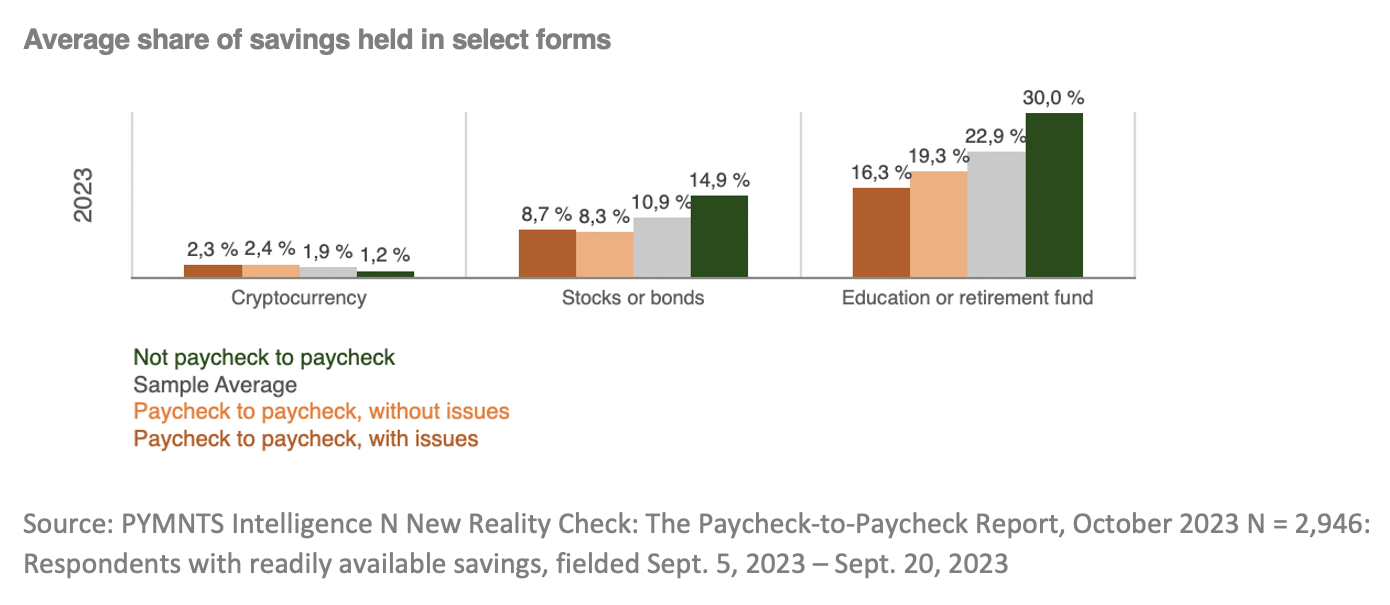Just One-Tenth of Savings Are Stored in Financial Assets

In times of economic turbulence such as these, investing in interest-bearing financial assets is one way to mitigate the effects of inflation. Although U.S. consumers have seen their available savings dwindle in recent years, more consumers have decided to invest in funds and bonds, taking advantage of the soaring share values of many of stock prices, including the major stock market indexes. Nevertheless, the share of consumers investing their savings in this type of financial assets does not exceed 11%, a portion that highlights a conservative investing profile.
About the Numbers
These are some of the findings detailed in this edition of “New Reality Check: The Paycheck-to-Paycheck Report,” a PYMNTS Intelligence and LendingClub market research collaboration. The Savings Deep Dive Edition examines consumers’ ability to put aside and save money in the current economic environment, especially when faced with major expenditures.
Savings by Financial Asset
The study reports that aggregate savings in the U.S. amounted to an average of nearly $11,200 per individual in September 2023, an amount that has declined by roughly 2% year over year after netting out the inflation effect.

When it comes to consumer preferences on how to allocate these savings, the average consumer held 23% stores in education or retirement funds, the largest of all financial assets considered, 11% in stocks or bonds and around 2% in cryptocurrency. The remaining amount was allocated to a mix of forms that included checking accounts, business investments and other forms of financial assets.
This mix highlights a conservative approach to savings among U.S. consumers. As a reference, while the S&P 500 index has grown by more than 15% from September 2022 to September 2023, and the Dow Jones index grew over 11% in the same period, barely 1 in 10 U.S. consumers decided to invest their savings in bonds or stock. Notwithstanding, consumers living in a healthier financial situation without issues in making ends meet allocated up to 15% of their saving to this form of financial asset, almost the double of those living paycheck to paycheck and with issues to pay bills.
Around half of domestic investors have experienced growth in the value of their portfolios for each class of financial asset, including bonds and stocks, up from 31% when surveyed in 2022. Despite the portion allocated to bonds and stocks not being very high, this recent growth in a period when consumer prices soared above 3.4% underscores an inclination of consumers to obtain an economic return on their savings to palliate the erosion caused by inflation.

